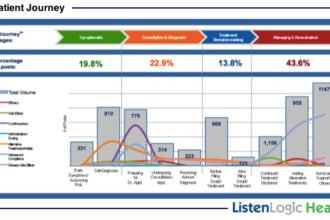In my last Health Alert, I identified some characteristics of complex systems. Among those were: (1) complex systems are too complicated for any single individual to completely comprehend; (2) simplified models can help, but they are always imperfect; (3) in health care, we don’t even have an imperfect model to rely on; and (4) changing the parameters of a complex system always produces unintended consequences that may make matters worse than they were before the change.
In this Health Alert, we want to consider some policy implications.
In my last Health Alert, I identified some characteristics of complex systems. Among those were: (1) complex systems are too complicated for any single individual to completely comprehend; (2) simplified models can help, but they are always imperfect; (3) in health care, we don’t even have an imperfect model to rely on; and (4) changing the parameters of a complex system always produces unintended consequences that may make matters worse than they were before the change.
In this Health Alert, we want to consider some policy implications.
Complex Systems Cannot Be Managed from the Top, Down. Precisely because knowledge about the system is limited, even the best models are highly imperfect and interventions always produce unintended consequences, top-down management of a complex system never works. The best you can do is to remove perverse incentives faced by those at the bottom — leaving people free to cooperate and solve problems from the bottom-up.
Consider a notorious violation of this principle. At one point, leaders in the Soviet Union thought they could understand enough about their country’s entire economy that they could manage the whole thing from a central command post. Today, even the Russians admit they were wrong.
What is true of markets generally, however, is even more true of the health care sector.
The Core Components of Complex Systems Cannot Be Copied. Time and again, Barack Obama has told us how he views health reform. “Let’s find out what works,” the president says, “and then go copy it.” Yet this is precisely what you cannot do with a complex system. The core components cannot be copied, duplicated or replicated.
In the field of education, we have been trying this approach without any success whatsoever, and education is far less complicated than health care. After the publication of “A Nation at Risk“ about a quarter of a century ago, alarmed reformers decided to study the best schools to determine what they do that works and to use various carrots and sticks to try to get all other schools to do the same. This is what I call the “demand-side approach” to education reform. How well has this approach worked? Miserably.
Inner-city schools are about as bad as they ever were. So what are we doing about it today? We are continuing with the very same reforms that have failed for 25 years!
Meanwhile, developments in health care are like a parallel universe. On the supply side, we have the islands of excellence (Mayo, Intermountain Healthcare, Cleveland Clinic, etc.). On the demand side, we have a whole slew of experiments with pay-for-performance and other pilot programs designed to see whether demand-side reforms can provoke supply-side behavioral improvements. And never the twain shall meet.
We cannot find a single institution providing high-quality, low-cost care that was created by any demand-sided buyer of care. Not the Centers for Medicare and Medicaid Services. Not Medicare. Not BlueCross. Not any employer. Not any payer, anytime, anywhere. As for the pilot programs, their performance has been lackluster and disappointing.
What about other demand-side reforms: forcing/inducing/coaxing providers to adopt electronic medical records, to coordinate care, to integrate care, to manage care, to emphasize preventive care, to adopt evidence-based medicine, etc.? The Congressional Budget Office (CBO) has reviewed the evidence on all these reforms and concluded that the savings will be meager, if they materialize at all.
One reason why the demand side approach to excellence doesn’t work is that there is nothing to be copied. Scholars associated with the Brookings Institution identified 10 of the best hospital regions in the country and then tried to identify common characteristics that could be replicated. There were almost none. Some regions had doctors on staff. Others paid fee-for-service. Some had electronic medical records. Others did not.
A separate study of physicians’ practices found much the same thing. There were simply not enough objective characteristics that the practices had in common to allow an independent party to set up a successful practice by copycat alone.
In a recent Health Alert, I invited readers to consider applying the copycat approach to becoming as rich as Bill Gates, Warren Buffett or Sam Walton. If we could discover what they did right, and everyone copied their behavior, then we could all become billionaires. Right? Well, not quite.
Here’s the problem: In order for each of us to be a billionaire, we have to each be doing something that produces a billion dollars’ worth of goods and services. But if all we’re doing is copying action items out of a book, then we are not doing anything special. And if we’re not doing anything special, we are definitely not producing a billion dollars of value added.
Although there are some habits of highly successful people that can be identified and copied, there are not enough of them for each of us to become highly successful ourselves through copycat behavior alone.
Choosing Public Policies for Complex Systems. Most people in health policy do not understand complex systems. They really don’t understand social science models either. As a result, when they advocate or enact public policies, they are almost always oblivious to the inevitability of unintended consequences. The idea that a policy based on good intentions could actually make things worse is beyond their comprehension.
This problem is not unique to health care. I think it is fair to say that virtually everything we do to try to help low-income families meet essential needs is deeply flawed. In general, the middle class tends to have access to the benefits of capitalism. The poor must rely on government. The middle class exercises choice. The poor have no alternative to what they are offered. The middle class gets the benefits of competition. The poor are left with public sector monopoly. If a middle-class patient is unsatisfied with a doctor or a facility, she can take her dollars and patronize another. The poor tend to be left with whatever doctor or facility is given them.
In general, no one ever planned for the poor to have services that were inferior, bureaucratic and unresponsive. These outcomes are the unintended consequences of policies that were often designed to help them!
Public Policy Lessons. When dealing with a complex system for which there is no reliable predictive model, the first lesson is to show humility. Don’t restrict people’s behavior when you don’t know what you are doing. Restrictions on behavior limit people’s ability to meet their own needs and the needs of others. In the absence of better information, we should want people to freely exercise their intelligence, their creativity and their entrepreneurial abilities to solve problems.
A second lesson is that we should eliminate restrictions on behavior unless there is overwhelming evidence that they do more good than harm. This means, for example, allowing low-income families on Medicaid greater access to services whose prices are determined in the marketplace. Let Medicaid enrollees add to Medicaid’s fee with out of pocket money and pay the market price at walk-in clinics, surgi-centers and free standing emergency care clinics. Also, we should make it easier for nurses, physicians’ assistants and other non-doctor providers to deliver care to low-income patients by relaxing occupational licensing restrictions.
A third lesson is to avoid trying to administer and regulate the system from the top. If we are dealing with a complex system and we don’t have a reliable model to predict how it will respond to simple parameter changes, it is more important than ever to avoid trying to solve problems with top down commands. Instead, we need to begin the process of liberation by working from the bottom up.








